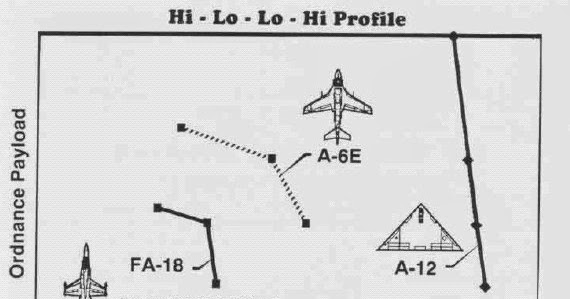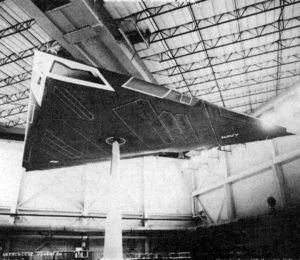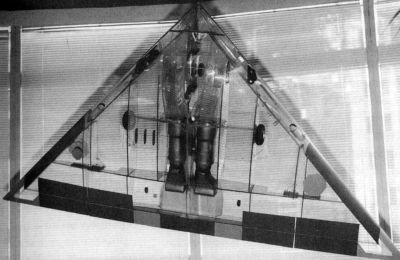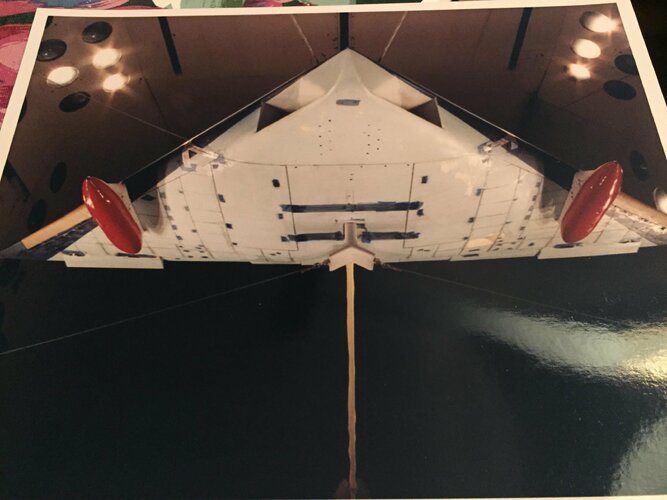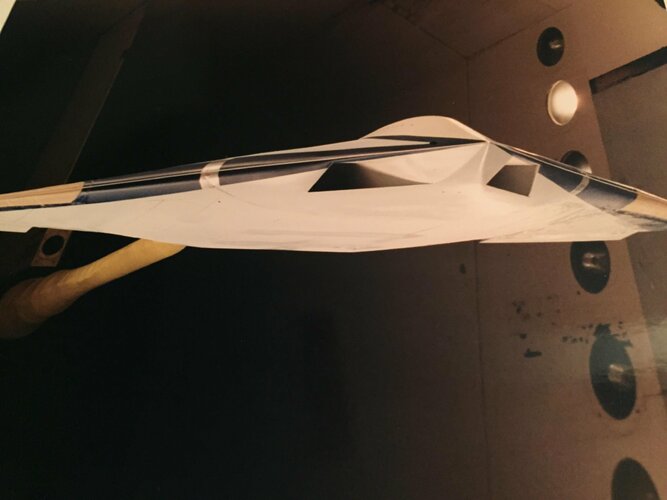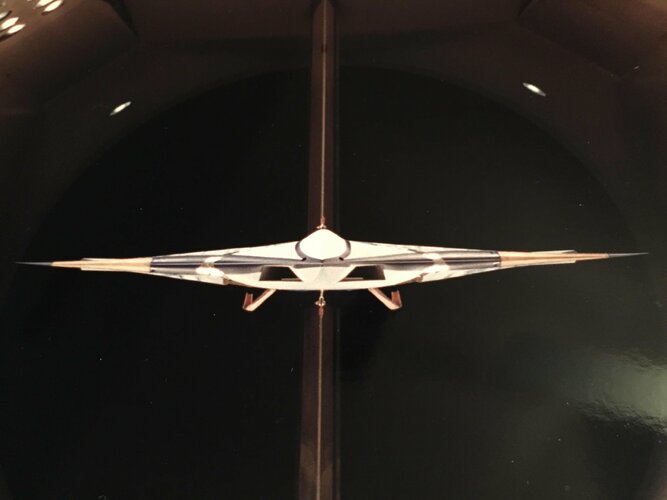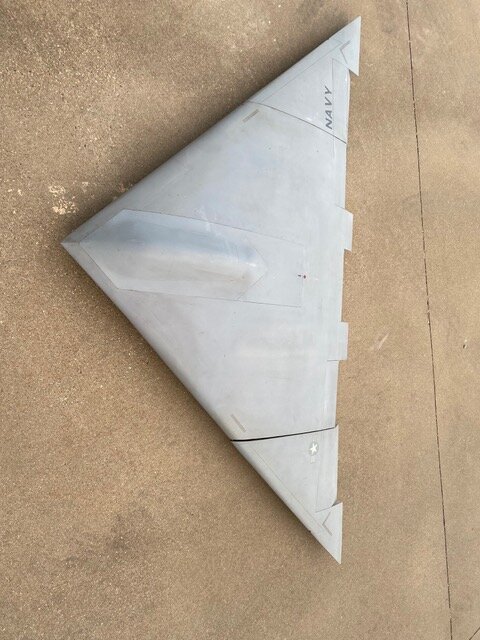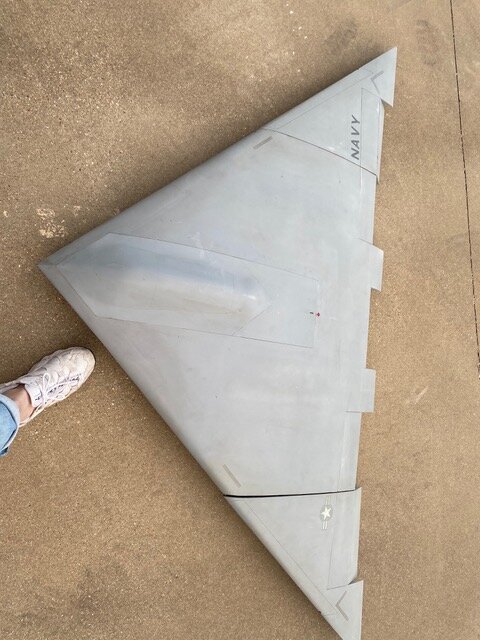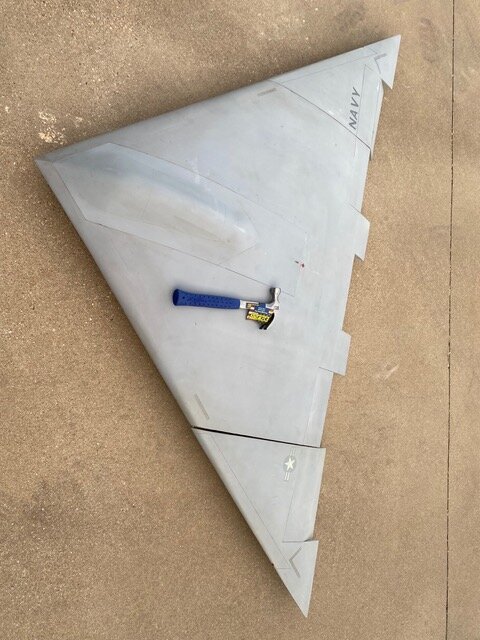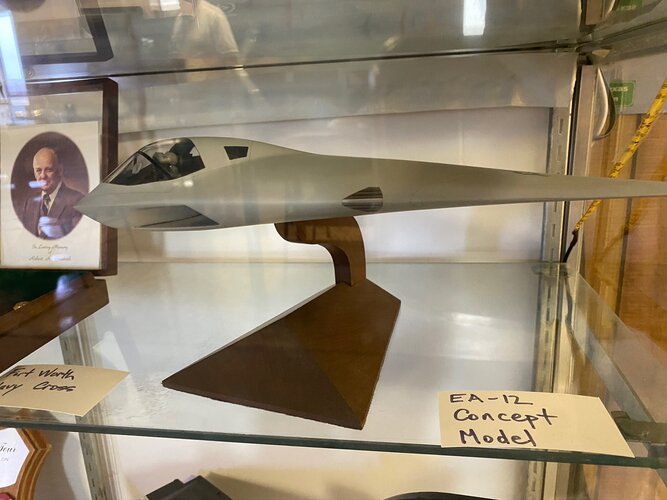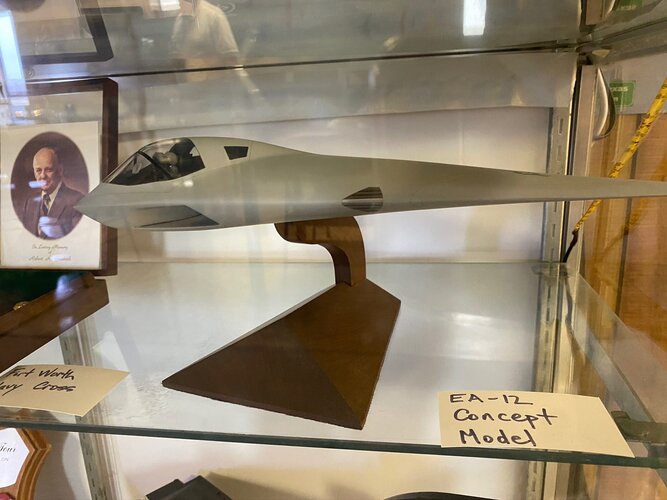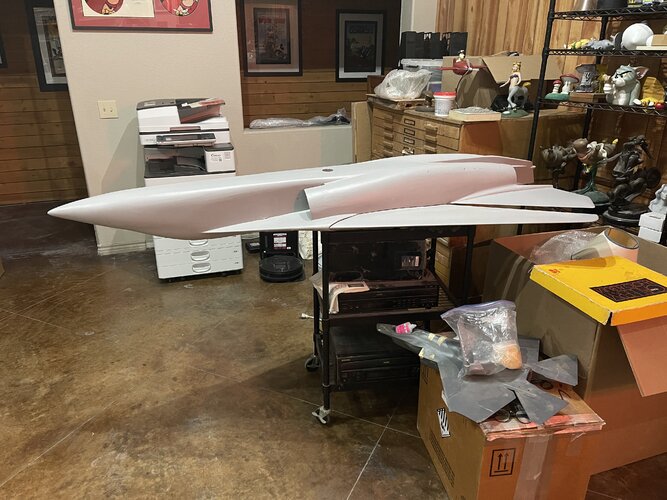GeorgeA said:
Well, John Lehman originally envisioned the ATA as a scaled-down B-2 using B-2 stealth technology, and contemporary accounts say Pete Aldridge did agree to terminate a competing fighter development and accept the ATA as the USAF replacement for its then-current generation of strike fighters.
I guess we can disagree on how sincere Aldridge or the Air Force was, but there was a (perhaps coincidental) termination of a large unnamed program in that period that resulted in thousands of layoffs (this was reported in AW&ST at the time). Certainly Stevenson and other authors have taken a shot at reconstructing the history here and are probably the authoritative sources on this episode.
In Stevenson's book, there is a Model 303 (or perhaps 323) which looks suspiciously like an F-111 had a one night stand with an F-14. TFBDMU also details the performance criterion differences between a fighter/fighter attack/bomber configured airframe with the attack being a flying win with A/B as I recall. Nothing makes sense with regard to expected radii, expected ordnance loads and expected fuel fractions.
Since the F-14 could haul 14 Mk.82 on the pallets but an F-111 could not haul 16 Mk.82 internally, something is clearly 'off'.
APQ-183 was a Ka band attack set. Yet the A-12 was expected to both carry and provide guidance illumination for the AIM-152 AAAM, something that the F-14 itself could not do without an auxiliary radar pod.
The A-12 was a short chord wing with a 24,000lbf installed thrust on an airframe with a known 2,000lb weight overage, at program start. The USN then went on a task master campaign with GD/MDD to 'get the weight out!' while promising a lot of VLO they didn't have the muscle to twist the AFSC fair haired children's arm far enough back to provide.
So bad were things like SEROC and Radius that the program was all but shut down until they literally changed the moldline (something that never should have happened during FSED) to a 'thick section' wing to buy back lift and gain more fuel. You see this in the Anigrand vs. Planet Models replicas.
Despite what must have been a massive increase in both weight and lift at drag, SEROC supposedly ROSE, back to acceptable levels. At the same time drawings of the jet began showing kickdown mass flow doors, like those of the X-32, which can only mean a pretty big change in powerplant inlet requirements, if not an entirely new engine.
If you read the end notes of TFBDMU, you'll note that one of the arguments used against the government (the contractors won the first judgment and two of the followon appeals) was that the entire industry came together to save the A-12, right at the last, and the USN auditor who condemned the aircraft, on weight grounds, did not know about a special modification to the jet which supposedly added a 'bra', like a sports car mud guard that totally changed the planform of the airframe to more of a double-delta shape, while finally solving a serious problem with the RCS of the inlets acting as cavity reflectors while removing the RCS vanes altogether, as these simply created multipath reflections across a couple of critical illumination angles.
Could this be part of what changed the available power levels?
If you look at any of the drawings of A/X, the flying wing version of that aircraft, essentially a simplified A-12, designed to harvest what was saveable from a politically non-capitalizable program, into a simpler airframe, has a double delta with protruding nose...
I am essentially 60:40 that the ATA was a monumental hoax as part of the Reagan Era 'spend them under the table' bluff. An airframe configuration that nobody would have naturally chosen for a carrier attack jet (flying wings have huge lift margins until you get the AOA right up there and then they deep stall, unrecoverably, and sometimes even flip, due to the short couple moment between LEF/TEF across the CL).
If it was real, it looked, in it's final configuration, nothing like a Flying Wing and much more like a Modified Delta, similar to the X-47B. And it is this condition which makes the program all the more suspect because it again, does not match the configurational specs for any of the design points, strongly implies major design changes, post CDR, and has no flying testbed, to confirm aeros effects, separate from the structures and VLO systems work, which should have been separate engineering efforts in their own right.
No company in their right minds would accept so much risk, across all three primary design criterion, with 'promises' of support in areas which they themselves had no or limited experience. Again, IF HONEST, this means that either GD had a lot more VLO experience (I would suspect a crash program after Have Blue/Tacit Blue) than is hinted or that the true source of VLO design revolutions was coming from someplace black/CSAR else. Clearly not DARPA.
If it was false, then things like a Lawyer telling the USN to break federal DFAR laws by creating an automatic deficiency as fraud in the inducement and then doubling down when the contract defaulted as Northrop stepped out and forcing GD to 'bid against themselves' suddenly takes on a new fall-guy meaning. As does Elberfeld's 'I never went to Defense Acquisition School but I'm game!' leadership of such a critical program for nearly a decade, AS A CAPTAIN.
Like any Admiral in charge of NavAir is going to let a snot nosed kid punk his retirement five years out. Hmmmm, Garret? I think it was him, was no such fool.
Both the USAF and USN have massive databases of past designs which they linked to FES structural models to calculate 'truthiness' in contractor promises, the USAF also having one of the largest independent modelling resources via all manner of labs from Ames to Armstrong.
The Blue Suiters said they ran tests which showed the A-12 would not take off from anything shorter than a 15,000ft runway, as far back as 1986-87, yet they didn't jump ship until just after the Marines did, right before cancellation of the program. Again, NO. This is beyond giving your competitor enough rope to hang themselves (See: _Illusions Of Choice_ and the F-111B) but instead looks more like a VR simulation of a program that was never supposed to lead to a working airframe.
They were not going to get 500 F-15Es, no matter what. And the F-117 was a boutique program in it's own right, with every jet hand built and a monster to keep operational (as well as useless in the USAFE mission as all SALH platforms are) while the B-2 was SIOP oriented with all the Strategic Platform Risk that implies, if it shows up over Europe. So if they were just not interested in the A-12 because it was a USN airframe, why didn't they at least exploit it as a testbed for their own new project start on a Gen-3/4 VLO with GAM level through-clouds IAM delivery as the F-35 clearly was designed around 'baked right in + MMTD' standoff stealth?

